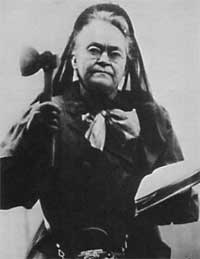Controlling Growth by Controlling Attractiveness
In Woodstock, Vermont, everyone’s mad about a highway. In other places the issue is a sewer system or a school. The real issue, of course, is growth. According to Jay Forrester’s Attractiveness Principle (Forrester is a professor of systems analysis at MIT) there’s only one way to control growth — control attractiveness.
…
In a free society if any place is unusually attractive, folks will — no surprise — be attracted there. The most mobile people (the young, the rich, the educated) will get there first. The place will grow until its attractiveness has been reduced by crowded highways, or unemployment, or scarce housing, or pollution, or just plain visual blight. (The most mobile people have moved on by then). When the place is no more attractive than anywhere else, then and only then will it stop growing. What else can stop it?
…
The attractiveness of a place is a complex combination of climate, economy, amenities, scenery. No one can define attractiveness exactly, but people make up their minds about it every day by deciding to move from Hartford or Boston or Westchester County to Vermont (that’s the direction they’re moving at the moment). Millions of human judgements weigh Vermont’s clean air against Boston’s job market and Manhattan’s cost of living. The very different mixes of attractiveness and unattractiveness in those places may seem incommensurable, but people make their comparisons, and eventually attractiveness evens out everywhere.
…
The normal instinct of public officials, including those of Woodstock, is to fix problems and make their community perfect. The more perfect they make it, the more new people show up. What Woodstock needs to do, Forrester would say, is decide what kinds of imperfection it’s willing to live with.
A crowded, unsafe highway? If that’s unacceptable, then choose something else. Super-restrictive zoning, perhaps, or an absolute limit on new curb cuts, or higher property taxes (I know, they’re already too high, but not high enough to stop people from moving in). Bad schools. Bad air. No jobs. Developments so ugly you might as well live in New Jersey. Some sort of whopping surcharge on those developers. Either Woodstock chooses its form of unattractiveness, or the growth process itself chooses.
It takes awhile to absorb the implications of the Attractiveness Principle, because it turns conventional thinking upside down (Forrester is good at doing that). Its implications are not good news for the sort of people who live in Woodstock. The Principle says you can’t live in a privileged bubble of attractiveness, unless you are perpetually young, rich, educated, and on the move at the head of the attractiveness wave. It says that growth is your problem wherever it occurs. It says the only way to be sure of living in an attractive place is to be committed to the attractiveness of every place.
From the Donella Meadows Archive


